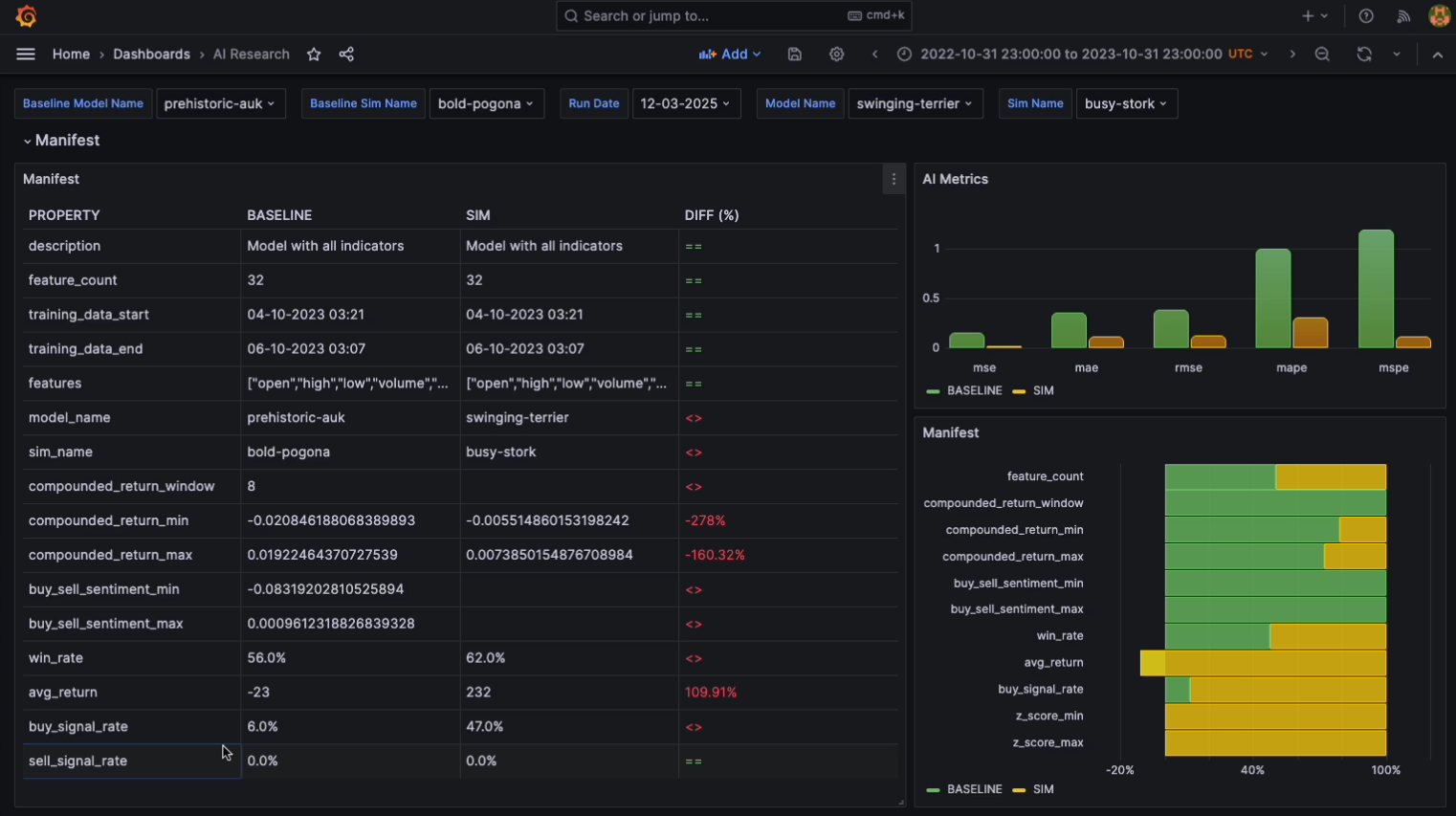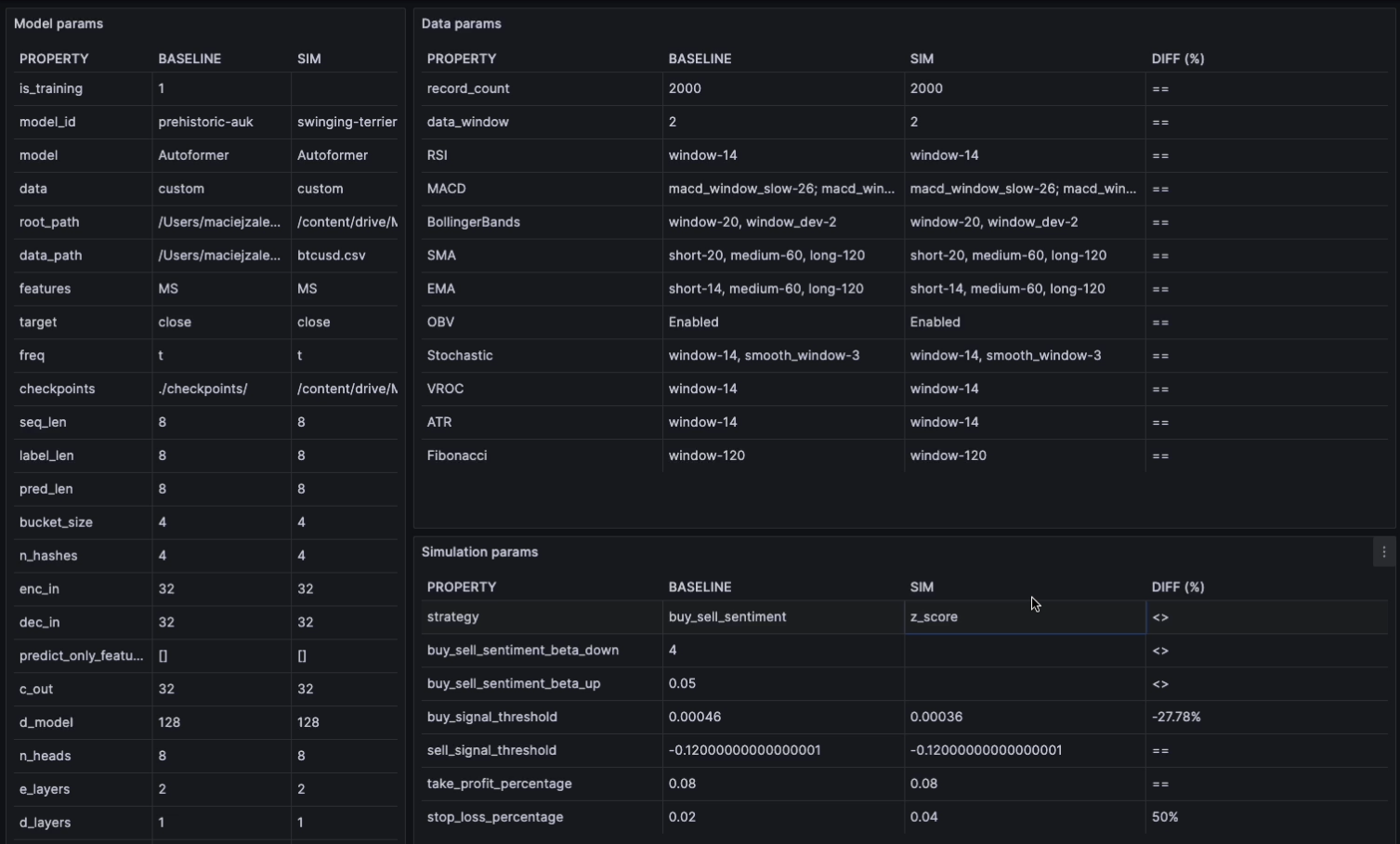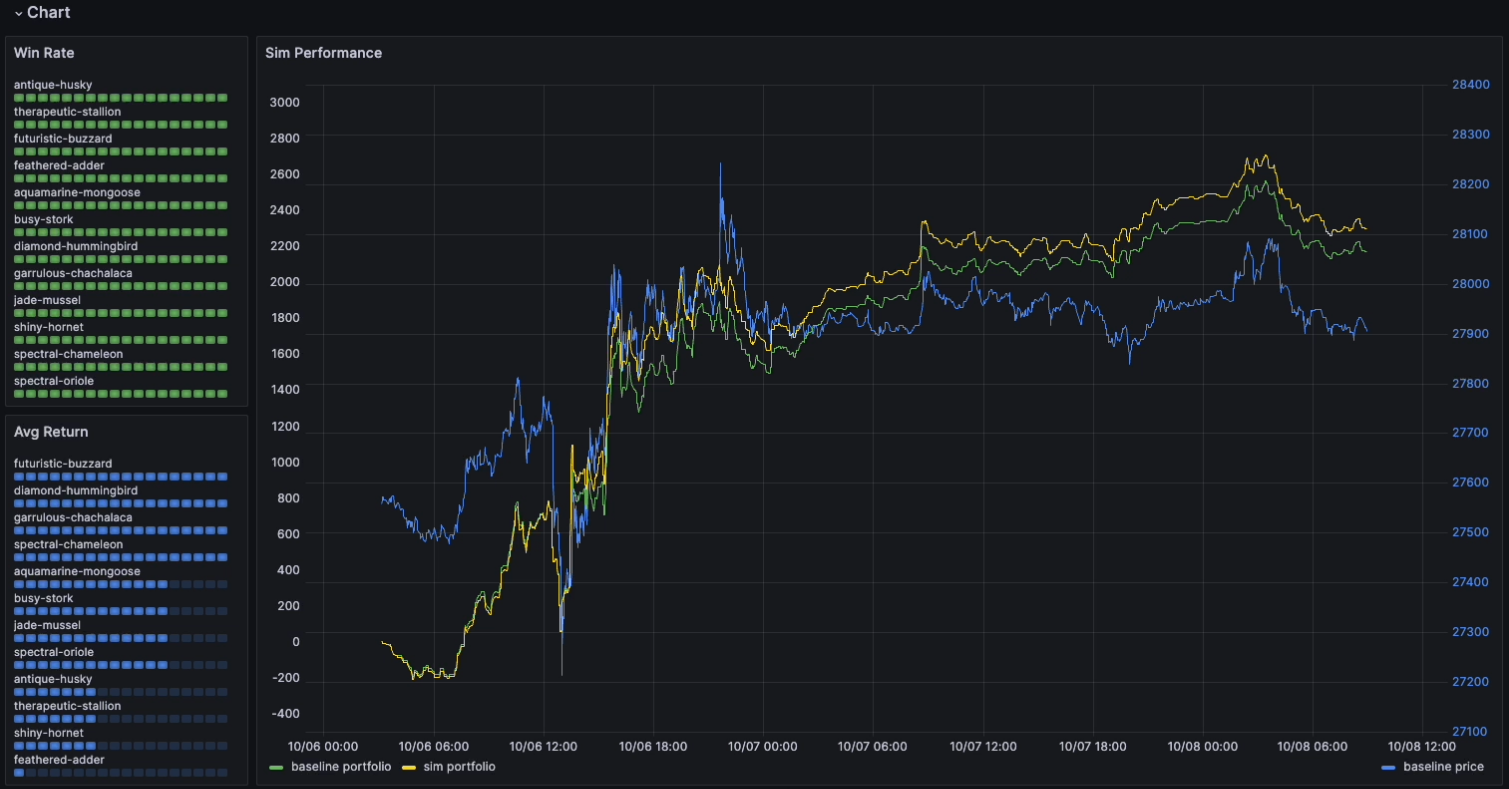AI Portfolio Manager
AI-Driven Crypto Portfolio Manager
Overview
This is a comprehensive, institutional-grade platform for automated cryptocurrency portfolio management, built by the Gotocrypto engineering team. The platform combines academic research, AI-driven forecasting, real-time sentiment data, and production-grade DevOps infrastructure to run simulations, live executions, and analytics across both spot and perpetual crypto markets.
The architecture integrates traditional finance theory with modern AI models to provide intelligent asset allocation, dynamic strategy adjustments, and detailed risk modeling. Built for scalability and modularity from the ground up, the system supports both advanced research workflows and robust automated trading pipelines.
Strategy, AI, and Data
The platform’s core revolves around dynamic strategy execution based on models derived from high-impact academic papers. We implemented rebalancing and allocation strategies that optimise for Sharpe ratios, volatility clustering, and drawdown resilience. These strategies are enhanced with real-time on-chain and off-chain sentiment signals retrieved via the Santiment API, providing data such as whale movement, social dominance, NVT ratios, and funding rates.
AI integration plays a central role in forecasting and signal transformation. We employ Autoformer, a transformer-based model (introduced at NeurIPS 2021), to predict volatility and directional trends over time. In parallel, LSTM networks handle trend smoothing, while GPT-based classifiers extract macroeconomic sentiment from news and social data. These outputs feed into reinforcement learning agents trained to manage dynamic position sizing, regime detection, and risk rotation.
Simulation and Analytics Engine
We built a bespoke backtesting engine tailored for crypto portfolios containing multiple spot assets. The engine simulates rebalancing triggers, slippage, and allocation shifts over historical data, and stores outputs in a high-performance ClickHouse database. Users can analyse performance metrics across timeframes using our Grafana-based dashboard, which was custom-integrated for strategy visualization and live monitoring.
Backtests are executed and analysed through the processing engine, a dedicated module in .NET Core that interfaces with historical pricing data and strategy specifications. Its output is published into time-series visualisations, enabling both researchers and portfolio operators to iterate rapidly on hypothesis testing.
Strategies and Backtest Interface

This dashboard ingests your experiment manifest-win rate, average return, buy/sell signal counts, AI feature usage, MSE/MAE/MAPE-and transforms raw numbers into clear, actionable insights. Side-by-side comparisons of baseline and simulation parameters make it effortless to spot which tweaks actually move the needle. Metrics like win rate and signal counts put the spotlight on your strategy’s real-world edge

This panel breaks down the nitty-gritty settings of our baseline versus simulation models-everything from learning rates and layer sizes to regularisation tweaks-while highlighting the extra data features we’re feeding into the simulation: technical indicators, social-media sentiment scores, fear & greed indices, market index signals, and more. It’s your one-stop view of how each tweak and new data source shifts model behavior under the hood.

The main chart overlays the simulation’s equity curve on our predefined baseline trading strategy, instantly highlighting performance divergences. In the adjacent sidepanel, you can flip between alternate simulation runs-each benchmarked against the same baseline-to spot the optimal parameter set in seconds.
Sentiment weighted strategy
The solution enabled the systematic design and iterative refinement of a “Sentiment-Weighted Macro Momentum” crypto strategy by unifying multi-source feature engineering, robust signal generation, and dynamic allocation rules. On-chain order-book depth and price momentum breakouts feed a momentum module augmented by RSI and MACD cross-signal filters for precise entry/exit timing. A real-time sentiment engine ingests Twitter and news-feed streams-quantifying bullish versus bearish sentiment-then modulates position sizing via a Fear & Greed Index overlay. Concurrently, a macro-data adapter adjusts exposure based on interest-rate futures and S&P 500 index volatility. Backtests against our test crypto index demonstrate a consistent ~15% annualised return uplift, validating the efficacy of combined technical, sentiment, and macro inputs in a unified trading pipeline.
Execution & Exchange Integration
For real-time strategy deployment, we are actively integrating execution layers for both Binance Futures and Hyperliquid. These components feature modular API wrappers, real-time risk checks, and slippage-aware order routing. A strategy runner governs the scheduling and decision flow, incorporating reinforcement learning outputs to adjust exposures under varying market conditions.
The system is built to transition seamlessly from simulation to execution, using mirrored interfaces between the backtester and the live engine. Execution metrics and trade events are streamed into internal observability dashboards, allowing for continuous performance evaluation.
Signal Extraction & Enrichment
Supporting this architecture is a live data acquisition pipeline. One of its core services, the OHLC sampler, acts as an extractor that fetches the complete list of available assets from the various prices sources APIs. It pushes token metadata, market caps, and historical price series into JMS-compatible queues, supporting distributed signal transformation, asset filtering, and strategy filtering. This forms the foundational layer for asset universe definition and tier-based allocation logic.
Infrastucture & CI/CD
The platform is supported by a robust, cloud-native infrastructure designed for continuous delivery, scalability, and high observability. We implemented a complete CI/CD pipeline using Jenkins, automating everything from test execution to deployment and rollback. All components are containerised using Docker, and the system is orchestrated within a Kubernetes cluster using Helm for deployment templating and environment consistency.
System observability is handled through Prometheus instrumentation and Grafana dashboards. These cover system health, strategy performance, execution metrics, and infrastructure load, giving operators deep visibility across the stack.
Web3 Extensions (R&D)
In parallel, we are exploring a Web3-native extension that will enable tokenised portfolio exposure and DAO-based delegation of asset management. The idea is to represent strategies as smart contracts or vaults, governed by on-chain votes and optionally assigned to off-chain execution runners. Initial dashboard interfaces are under design, with a modular API built to interface with both EVM-based chains and governance layers.
Tech Stack
Status
In active development. The backtesting engine is deployed and functional. Execution engine for Binance and Hyperliquid is under construction. Autoformer and sentiment-based strategies are being integrated into the full pipeline.